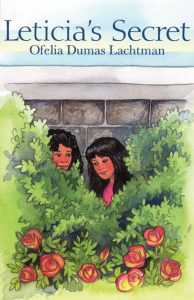“My name is Ana. Every year, my family makes tamales for Christmas. This year, I am six, so I get to mix the dough, which is made of cornmeal. My sister Lidia is eight, so she gets to spread the dough on the corn husk leaves. I wish I was eight, so that my hands would be big enough to spread the dough just right–not too thick and not too thin.” And so the years pass, and Ana turns eight, ten, twelve, fourteen, sixteen. But every year, big sister Lidia is always two years older. Ana envies her elder sibling and wishes she could do what Lidia does: put just the right amount of meat inside the tamales and roll them up; steam the tamales without scalding herself with the hot, hot steam; chop and cook the meat for the tamales without cutting or burning her hands. When she turns eighteen, though, Ana knows she will keep making tamales and she will be able to do all of the steps herself in her very own factory. When Christmas comes around, Ana will deliver tamales to all of her customers around the world, in delivery trucks that say “Ana’s Tamales.” And maybe Ana will even let Lidia work for her. Gwendolyn Zepeda’s rhythmic prose is combined with April Ward’s bright illustrations to create an affectionate and amusing story about sibling relationships that introduces an important Hispanic holiday tradition–making tamales!
growing up
Leticia’s Secret
Call Me Henri
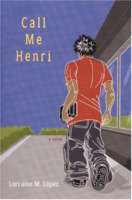
Enrique, a young boy in Peralta Middle School, faces abuse at home and danger on the barrio streets. Yet he is driven to succeed by the desire to join that “other America” he sees on TV and in the movies, and is aided in his quest by compassionate teachers. His ambition finds expression in his determination to drop his ESL class in favor of taking French, and his story begins, “Call me Henr.”
Lorraine Lpez (author of Soy la Avon Lady and Other Stories) has created a vivid picture of barrio life, filled with honesty, insight, and humor for young adults. She paints a balanced and detailed landscape of Enrique’s world. Although Enrique is confused and angered by his mother’s refusal to stand up for him against the abuse of his stepfather, he also draws strength from the supportive and loving family of his friend Francisco. While some of his teachers are uncaring or inept, others provide help and encouragement at critical moments in his life.
When Enrique witnesses his friend Horacio gunned down in a drive-by shooting and is seen by the assailants, gang members set out to kill him. As the novel reaches its climax, Enrique must make some agonizing decisions.
Although specifically about barrio life, this novel is universal in its themes-the drive for success, the desire for love and family support, and the need for true friendship. Lpez’s fully delineated characters provide a rich and credible mural of our human comedy.
Lorraine Lpez‘s Soy la Avon Lady and Other Stories was selected for the Marmal Prize, and also won the IPPY Award for Multicultural Fiction.
I Am Mexican American (Our American Family)
Spirits of the High Mesa
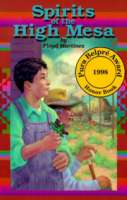
In this moving coming-of-age novel set in rural New Mexico, the young protagonist, Flavio, is torn between the seductiveness of progress and new technology and his loyalty to village traditions so steadfastly preserved by his grandfather, El Grande.
He Forgot To Say Goodbye
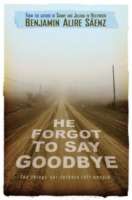
“Ramiro Lopez and Jake Upthegrove don’t appear to have much in common. Ram lives in the Mexican-American working-class barrio of El Paso called “Dizzy Land.” His brother is sinking into a world of drugs, wreaking havoc in their household. Jake is a rich West Side white boy who has developed a problem managing his anger. An only child, he is a misfit in his mother’s shallow and materialistic world. But Ram and Jake do have one thing in common: They are lost boys who have never met their fathers. This sad fact has left both of them undeniably scarred and obsessed with the men who abandoned them. As Jake and Ram overcome their suspicions of each other, they begin to move away from their loner existences and realize that they are capable of reaching out beyond their wounds and the neighborhoods that they grew up in. Their friendship becomes a healing in a world of hurt.
Julian Rodriguez Episode Two: Invasion Of The Relatives
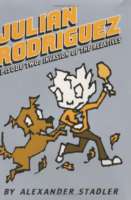
When last we encountered Julian Rodriguez, he’d saved Earth from destruction by bending to the will of his archenemy, Evilomami, and taking out the dreaded trash. In this episode, our hero must don an absurd ceremonial costume and risk contamination at the hands of The Relatives, a band of crude, genetically linked mini-brains. Yet again, Julian saves Earth from total annihilation after he realizes that the planet has at least one redeeming quality — the Earthling delicacy known as empanadas, which his Alpha Nana just happens to be serving for dinner. PRAISE FOR JULIAN RODRIGUEZ EPISODE ONE: “First in what readers will hope will be a robust series, this hybrid of fiction and graphic novel dusts off a favorite conceit with a slick swipe of edgy visuals and tart commentary. . . . It’s impossible to read this without laughing.” — Publishers Weekly, starred review
Surprising Cecilia
Surprising Cecilia is the second novel-following the success of Cecilia’s Year-about a girl whose dreams carry her far beyond the small farm community she lives in. Both novels are set in the rich Hispanic culture of the Rio Grande Valley in the 1930s. Cecilia has worked hard so that she can go to high school. Now it’s September-the school bus is bringing Cecilia to the new adventures, surprises, and responsibilities of growing up. Susan Gonzales Abraham and Denise Gonzales Abraham are the daughters of Cecilia Gonzales Abraham, the hero of the Cecilia books. Cecilia’s Year has been selected as the Best Book for Young Adults in 2004 by the Texas Institute of Letters.
El Regalo Mágico
Felita
 A vivid portrayal of a close-knit Hispanic community Felita’s parents promise she will love their new neighborhood. Only Abuelita, her grandmother, understands how much Felita will miss her old block, and her best friend Gigi. But her new neighbors taunt and tease Felita and her family because they are from Puerto Rico. First published twenty years ago, Felita’s compelling story has resonance for kids today.”An honest, realistic view of an important aspect of contemporary American life.” –The Horn Book* An NCSS-CBC Notable Children’s Trade Book in the Field of Social Studies* A Child Study Children’s Book Committee Children’s Book of the Year* A Puffin Novel * 112 pages * Ages 8-12
A vivid portrayal of a close-knit Hispanic community Felita’s parents promise she will love their new neighborhood. Only Abuelita, her grandmother, understands how much Felita will miss her old block, and her best friend Gigi. But her new neighbors taunt and tease Felita and her family because they are from Puerto Rico. First published twenty years ago, Felita’s compelling story has resonance for kids today.”An honest, realistic view of an important aspect of contemporary American life.” –The Horn Book* An NCSS-CBC Notable Children’s Trade Book in the Field of Social Studies* A Child Study Children’s Book Committee Children’s Book of the Year* A Puffin Novel * 112 pages * Ages 8-12

